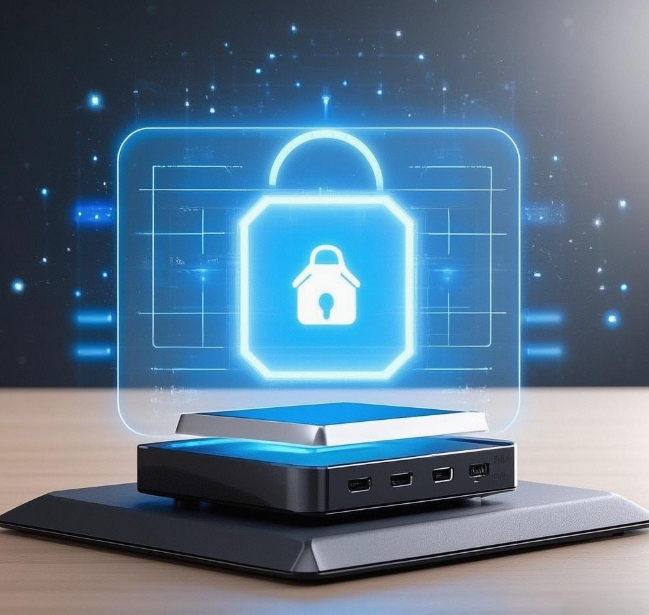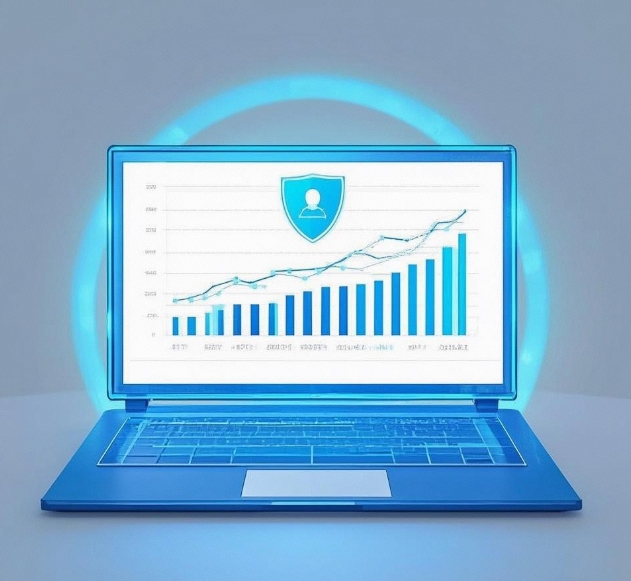How to Ensure Data Privacy and Security in IoT Development?
- latest articles
- 1.DApp Development & Customization: Merging Diverse Market Needs with User Experience 2.Analysis of the Core Technical System in DApp Project Development 3.How to achieve cross-chain interoperability in Web3 projects? 4.How does the tokenization of points reconstruct the e-commerce ecosystem? 5.How to Set and Track Data Metrics for a Points Mall? 6.What is DApp Development? Core Concepts and Technical Analysis 7.Inventory of commonly used Web3 development tools and usage tips 8.Development of a Distribution System Integrated with Social E-commerce 9.Six Key Steps for Businesses to Build a Points Mall System 10.What is DApp Development? A Comprehensive Guide from Concept to Implementation
- Popular Articles
- 1.Future Trends and Technology Predictions for APP Development in 2025 2.Analysis of the DeFi Ecosystem: How Developers Can Participate in Decentralized Finance Innovation 3.From Zero to One: How PI Mall Revolutionizes the Traditional E-commerce Model 4.DAPP Development | Best Practices for Professional Customization and Rapid Launch 5.How to Develop a Successful Douyin Mini Program: Technical Architecture and Best Practices 6.Recommended by the Web3 developer community: the most noteworthy forums and resources 7.From Cloud Computing to Computing Power Leasing: Building a Flexible and Scalable Computing Resource Platform 8.Shared Bike System APP: The Convenient Choice in the Era of Smart Travel 9.How to Create a Successful Dating App: From Needs Analysis to User Experience Design 10.From Design to Development: The Complete Process of Bringing an APP Idea to Life
In the rapid development of Internet of Things (IoT) technology, data privacy and security have become crucial issues. By connecting various devices and systems, IoT forms a highly interactive network, making data exchange and sharing more convenient and efficient. However, the proliferation of such networks also brings challenges like security vulnerabilities and privacy breaches, urgently requiring measures to ensure data privacy and security. This article will delve into how to ensure data privacy and security in IoT development, analyzing from technical, managerial, and legal perspectives, and propose corresponding solutions.
I. Overview of IoT
The Internet of Things (IoT) connects physical world devices to the internet through sensors, smart devices, embedded technology, and the internet, enabling intelligent interaction and data sharing between devices. IoT not only covers areas like smart homes, smart cities, and smart transportation but also extends to industrial automation, smart healthcare, and other industries, permeating every aspect of our lives and work.
However, with the proliferation of IoT devices and technology, there is heightened concern about data security and privacy. Every operation of an IoT device and every piece of data collected by sensors can pose potential security threats, especially when this data involves personal privacy. Protecting user privacy has thus become a complex and urgent issue.
II. Data Privacy and Security Challenges in IoT
Device Security Vulnerabilities
IoT devices are often manufactured by different vendors with varying technical standards, and many lack robust security measures. Attackers can exploit vulnerabilities in IoT devices to infiltrate networks or even launch large-scale attacks. These devices could be smart cameras, thermostats, or even smart meters. Once attackers gain control, they can steal vast amounts of sensitive data.Data Transmission Security
IoT devices typically transmit data via wireless networks, which are inherently vulnerable. Especially in insecure network environments, data transmission can be intercepted or tampered with, and attackers might even use man-in-the-middle attacks to steal user data.User Privacy Protection
IoT devices extensively collect users' personal data, including location, lifestyle habits, and health information. If this data is not protected, hackers can steal and misuse it, leading to privacy breaches. More seriously, this data could be illegally sold or used for fraud.Lack of Unified Security Standards
Currently, there is a lack of globally unified security standards in the IoT field. Each vendor has its own security solutions, lacking coordination and compatibility. This results in inconsistent security measures across IoT networks, allowing attackers to exploit vulnerabilities between different devices to launch attacks.
III. How to Ensure Data Privacy and Security in IoT Development
To effectively ensure data privacy and security in IoT development, a comprehensive approach from multiple aspects is necessary. Here are some key security measures:
1. Strengthen Device Security
IoT devices are the first line of defense for network security. Therefore, during the development and design of IoT devices, security must be thoroughly considered. Here are some effective security measures:
Hardware-Level Security
By incorporating Hardware Security Modules (HSM) and Trusted Platform Modules (TPM), ensure that the hardware layer of IoT devices is resistant to tampering. These modules provide secure storage, key management, and other functions to protect devices from physical attacks.Firmware and Software Updates
IoT devices often have security vulnerabilities due to untimely updates from manufacturers. Developers should ensure devices can receive timely security updates and that firmware has automatic update capabilities to prevent long-term security vulnerabilities.Device Authentication
To ensure secure communication between devices, developers can assign unique identities to each IoT device and use digital certificates for device authentication. This prevents unauthorized devices from accessing the network and reduces security risks.
2. Data Encryption and Transmission Security
Encryption is key to ensuring the security of data transmitted in IoT. Whether data is transmitted between devices or exchanged between devices and the cloud, encryption must be ensured.
End-to-End Encryption
Use end-to-end encryption to ensure data cannot be intercepted or tampered with during transmission. Employ modern encryption algorithms (such as AES, RSA) to encrypt transmitted data, so even if data is stolen, attackers cannot decrypt or use it.Secure Transmission Protocols
IoT systems should use secure transmission protocols like HTTPS and TLS, which provide additional security for data transmission. For wireless communication, technologies like VPN can also be used to encrypt network traffic and prevent data from being intercepted by third parties.
3. Permission Management and User Privacy Protection
Data in IoT systems often involves users' personal privacy, so reasonable permission management and privacy protection measures are essential to prevent data leaks.
Principle of Least Privilege
Developers should follow the principle of least privilege, ensuring each device or user can only access the minimum amount of data necessary. This not only enhances security but also prevents security issues caused by privilege abuse.Data Anonymization and De-identification
During data storage and usage, employ data anonymization or de-identification techniques to avoid directly storing users' personal identity information. Even if data is leaked, hackers would find it difficult to identify specific users.Regular Audits and Monitoring
Through regular audits and real-time monitoring of data access, developers can quickly detect abnormal behavior and respond promptly. Audit logs should be stored securely with tamper-proof mechanisms to ensure data traceability.
4. Establish and Adhere to Security Standards and Regulations
Due to the openness and cross-domain nature of IoT, the international community and governments have begun formulating relevant security standards and regulations to ensure IoT security. For example, standards like ISO/IEC 27001 and GDPR set clear requirements for data privacy protection. IoT developers should closely follow and adhere to these standards and regulations to ensure their products meet security requirements.
Compliance Checks
IoT product development should comply with relevant data protection laws and standards, such as the EU's GDPR and the U.S.'s CCPA. Compliance checks ensure that developed devices meet legal requirements for user privacy protection.Collaboration with International Standardization Organizations
IoT industries and standardization organizations worldwide are working together to establish unified security standards. IoT developers should actively participate in these international collaborations, promoting industry standardization to ensure the security of devices and systems.
IV. Future Outlook for IoT Data Privacy and Security
As IoT technology continues to evolve, data privacy and security issues will become more complex. In the future, data privacy and security in IoT development will exhibit the following trends:
Integration with Artificial Intelligence and Machine Learning
Artificial intelligence (AI) and machine learning technologies can help IoT systems more intelligently identify and respond to security threats. For example, AI can monitor device security in real-time, automatically detect abnormal behavior, and respond, thereby improving security protection levels.Application of Blockchain Technology
Blockchain technology, with its decentralization, tamper-proof, and transparent characteristics, can be applied to IoT data storage and sharing, ensuring data integrity and immutability. Through blockchain, user data can achieve trusted data exchange while ensuring privacy.Quantum Encryption Technology
With the advancement of quantum computing, quantum encryption technology will bring stronger security to IoT. Quantum encryption uses quantum mechanics principles to encrypt data, theoretically making it impossible to crack, providing a higher level of security protection for IoT devices.
V. Conclusion
The rapid development of IoT brings unprecedented convenience but also accompanies increasingly severe privacy and security risks. Ensuring data privacy and security in IoT development is not only a technical challenge but also a social and legal one. Developers should address security from multiple levels, including device security, data encryption, privacy protection, and compliance, adopting comprehensive security measures to ensure that IoT systems protect users' privacy and data security while providing convenience. Through technological innovation and international cooperation, we can hope to build a safer and more trustworthy IoT ecosystem in the future.
-

How to Use IoT Development to Enhance Supply Chain Efficiency
With the rapid development of the global economy and the deepening of digital tr···
-

Development and Innovation of the Internet of Things in the Healthcare Sector
With the rapid advancement of information technology, the Internet of Things (Io···
-

Data Storage and Analysis Methods in IoT Development
The Internet of Things (IoT) is one of the most revolutionary innovations in tod···

 Blockchain
Blockchain












